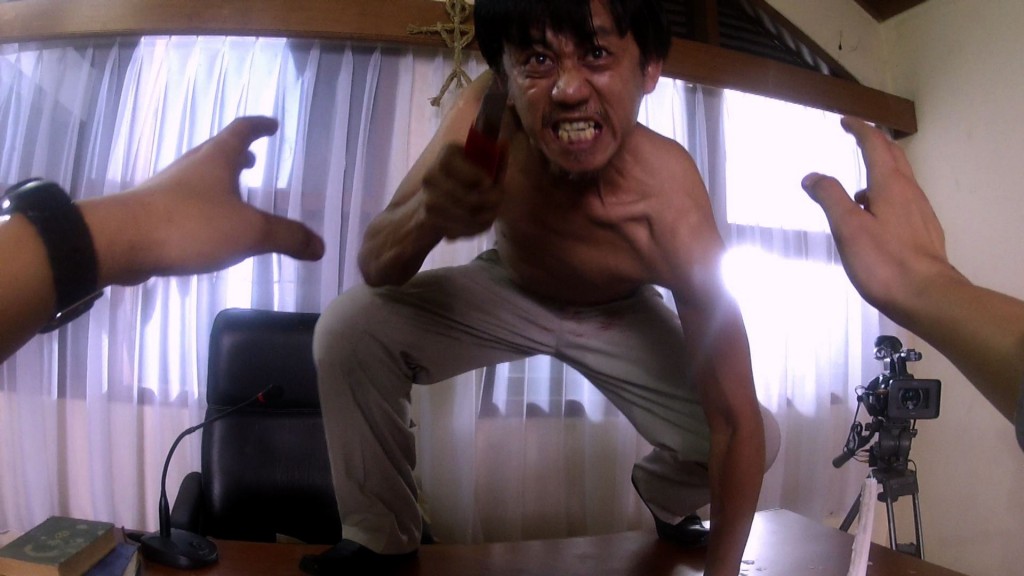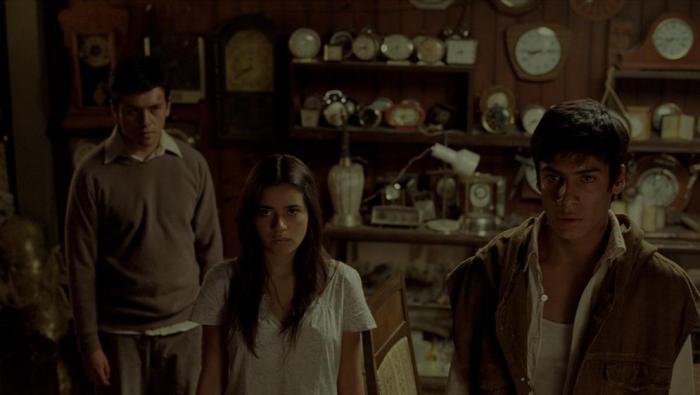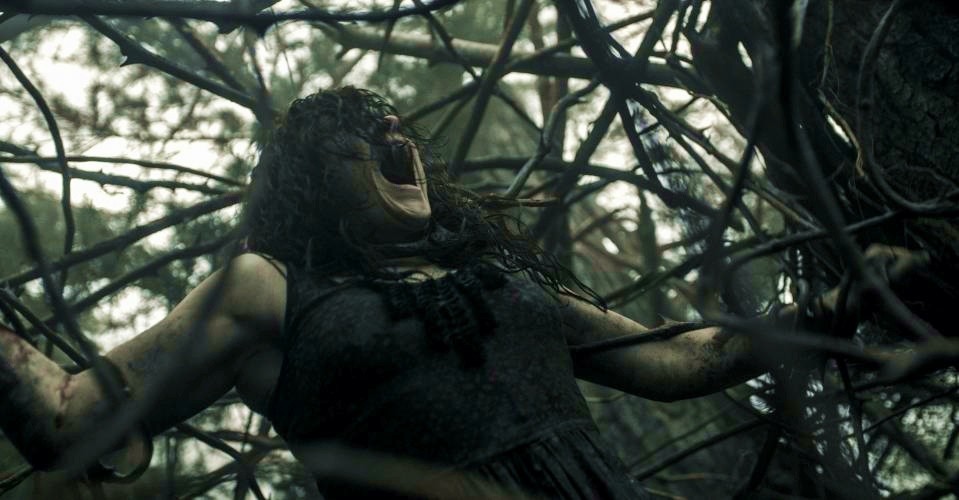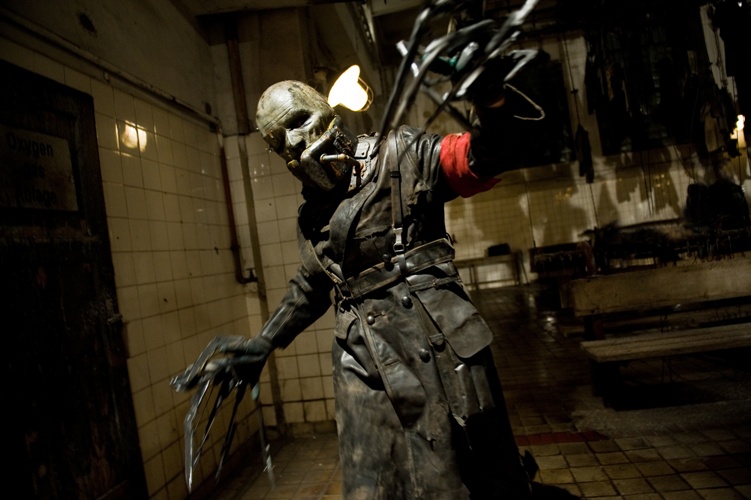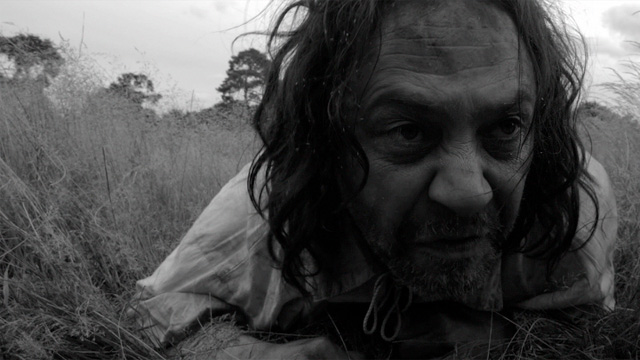The year isn’t quite over yet, but a cursory scan of this page suggests the horror field won’t be offering us much over the next month. On that basis, it’s time for a brief recap of the five best horror films of the year. I enjoyed all of these films and can recommend them to both horror buffs and those who like to dabble. They were all quite well-reviewed (by horror standards), so you needn’t take my word on it exclusively. Of course, please leave a comment if you think I’ve left a deserving film off the list, since I don’t pretend to have seen every horror film released this year and I’m always keen to watch more.
Note: I’ve previously reviewed some of the films on this list for ReelGood, so forgive me if I repeat myself.
5 | V/H/S 2
This film is a bit of an odd choice, since about half of it isn’t really much good at all. It’s an anthology of four found footage shorts; I won’t recap the premise of each, except to say there aren’t any real surprises, genre-wise. One of the shorts, however (“Safe Haven”) is exceptionally well-made, and V/H/S 2 lands on this list for its sake alone. Of the other shorts, one is fairly entertaining and the other two I can happily disregard. Feel free to skim; you won’t be missing much.
4 | We Are What We Are
We Are What We Are is an American remake of a 2010 Mexican film. It tells the story of a deeply insular Appalachian family, the Parkers, who practice an idiosyncratic brand of Christianity that requires them to kill and eat a young woman on an annual day of thanksgiving. The opening scenes of the film are brilliant: a torrential rainstorm sweeps into town, and the Parker’s matriarch dies unexpectedly of a mysterious illness, requiring her daughters to take on her ceremonial roles. The daughters are wary of doing so; worse, the rainstorm (which overshadows most of the film) begins to exhume the bones of former victims, sparking the interest of a local doctor whose daughter was killed years earlier. The film’s muted tones and the sombre, careworn faces of its cast evoke a sense of Lovecraftian doom and an evil as old as America itself. Unfortunately, the film stumbles somewhat at the finishing line, providing an unconvincing and predictable conclusion. Don’t let that put you off, however.
3 | Evil Dead
I was a little wary of this film, but I was very pleasantly surprised. It doesn’t have the shifty, larcenous feel of most remakes, perhaps because the original Evil Dead has been replicated and readapted so many times (most extravagantly in The Cabin in the Woods) that its elements (the lodge, the Necronomicon, the mocking dead) have become shared creative property. And as remakes go, Evil Dead is a loose one; the protagonist is now female, none of the other characters are particularly recognisable, and barring a few essential scenes, its sequencing is different. It’s a vibrant, energetic film, and a very gory one (at one point, blood literally pours from the sky). The cast are good—Jane Levy in particular is excellent as the protagonist, Mia—and the chaos is underscored by a surprisingly affecting parable about sibling loyalty. Regardless of whether the proposed sequel to/crossover with the original Army of Darkness turns out to be any good, Evil Dead is a real accomplishment.
2 | Frankenstein’s Army
Frankenstein’s Army is a deeply stupid film, but therein lie the seeds of its success. It doesn’t contain a trace of irony, which is rare nowadays. Watching it is like entering the fantasies of a gifted but slightly deranged child (think Calvin from Calvin and Hobbes, if he had been raised on violent videogames). It tells the story of a platoon of Russian soldiers lost behind German lines who stumble upon the laboratory of Dr. Victor Frankenstein (a third generation descendant of Shelley’s tragic genius) and are quickly torn apart by his creations, all of which look fantastically convincing. Some characters survive to be transformed into monsters themselves. It’s shot from the perspective of a cameraman, Dima, who is recording the mission for the benefit of his Soviet masters. They’re willing to overlook Frankenstein’s indiscretions if he agrees to put his talents to work for the CCCP (the irony, of course, is that this is exactly the approach the Americans took towards German rocket scientists). For the most part, the film moves with the logic of a rollercoaster—exhausting and euphoric—but its final act is genuinely disturbing.
1 | A Field in England
In his previous films, Sightseers and Kill List, Ben Wheatley demonstrated a remarkable ability to marry the mundanities of modern English life with a sense of uniquely English horror reminiscent of The Wicker Man. In A Field in England, he puts aside the mundane for the historical. Shot in black and white, the film is set during the English Civil War, against a backdrop of Miltonian disorder. It begins with the protagonist, Whitehead, and three other soldiers deserting from a battle which is heard but never seen. The men cross a broad, empty field in search of a mythical alehouse, devour psychedelic mushrooms, and stumble across a wide-hatted Irish alchemist, O’Neill. O’Neill forces them to dig for a mysterious treasure in the field. The film explores issues of earthly authority: as the King of England is overthrown, why do these men obey O’Neill’s commands? Is it because of his armed assistant, or are his powers real? Is O’Neill the magician he claims to be, or simply a fraud bossing around drug-addled deserters? Towards the end of the film, Whitehead gorges himself on mushrooms, and the ten minute sequence which follows is the most convincing representation of a psychedelic experience which I’ve ever seen on film. It’s the moment at which the film’s horror underpinnings erupt to the fore. The film’s dialogue is filthy and verbose, animated by a love of language, and the cast have classic English faces which look most natural beneath a layer of grime. A Field in England is, in my opinion, the finest film of the year, in any genre.
Could have been good: The Purge
Terribly overrated: The Conjuring
